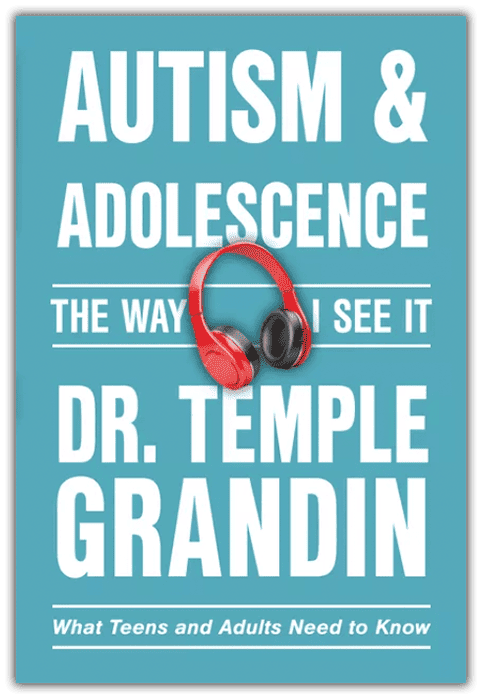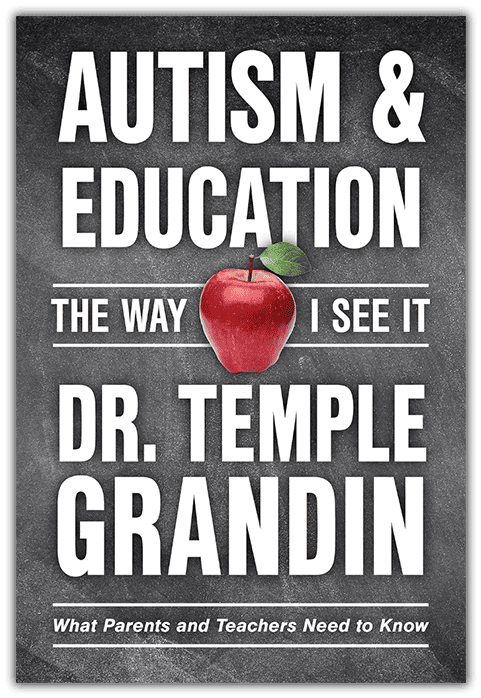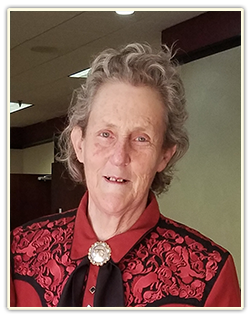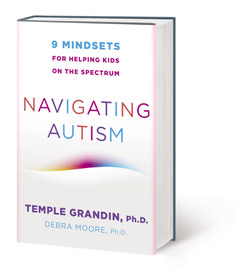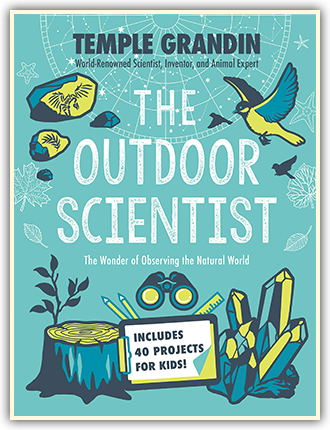
Webinars & Conferences
Upcoming Conferences
July 29 - Aurora, CO
August 14 - Hershey, PA
August 18 - Webinar
August 20 - New Orleans, LA
August 23 - Attica, MI
September 10 - Dallas Forth Worth
September 11 - Knoxville, TN
September 15 - Missoula, MT
September 19 - Cincinnati, OH
November 19 - Memphis, TN
November 20 - Jonesboro, AR
A MUST LISTEN!!
Temple's Latest Books!
Temple Grandin earns Dole Leadership Prize!
NAVIGATING AUTISM
"The Outdoor Scientist"
Both Autism and ADHD Have
Working Memory Problems
There is lots of crossover between ASD (Autism Spectrum Disorder) and ADHD. I have talked to many parents where their child’s diagnoses has been switched back and forth between autism and ADHD. Tara Stevens and her colleagues at Texas Tech University found that 59% of children who were diagnosed with ASD also had ADHD. This was more likely to occur in fully verbal children diagnosed after age six. Canadian researchers have also found that there were similarities in brain circuitry problems in both ASD and ADHD. Individuals with both labels are also more likely to have problems with working memory.
Give Them a Pilot’s Checklist
When I worked milking cows, I was saved by a checklist taped to the wall that outlined the steps on how to set up the equipment for milking and how to put it through the wash cycle after milking. The checklist saved me because I absolutely cannot remember a sequence of instructions. Set up required seven or eight steps and wash up was another three or four steps. On the job, a checklist can help an individual on the spectrum keep their job. It will help prevent an employer from becoming frustrated when the person cannot remember how to operate a piece of equipment after being shown several times how to do it. For example, if a person with ASD gets a job at McDonald’s, they will need a checklist to help them to remember the sequence for tearing down and cleaning the ice cream machine. After they have done it for a few weeks, they will have the process videotaped into their memory. At this point, the checklist will no longer be needed.
When I first started working with the met packing industry, I learned to remember the sequence of how the plant operated by videotaping the entire production line into my memory. To do this required many days of observation. Playing the “videotape” back in my imagination puts absolutely no load on working memory. In my imagination, I turn on the “video player” and walk through the plant. This videotape provides the sequence.
In conclusion, avoid giving long strings of verbal instruction. Demonstrate the task that requires a sequence of steps and provide a written checklist. Each bullet point on the checklist needs only three to five words to job the memory.
References
Ameis, S.H. et al. (2016) A diffusion tensor imaging study in children with ADHD, autism spectrum disorder, OCD, and matched controls, American Journal of Psychiatry (in press).
Englund, J.A. et al. (2013) Common cognitive deficits in children with Attention Devidit Hyperactivity Disorder and Autism, Journal of Psychoeducational Assessment, Vol. 32, pp. 96-106.
Kercode, S. et al. (2014) Working memory and autism, Research in Autism Spectrum Disorders, Vol. 8, pp. 1316-1332/
Stevens, T. et al. (2016) The comorbidity of ADHD in children with autism spectrum disorder, Research in Autism Spectrum Disorders, Vol. 21, pp. 11-18.
Schoh, J.M. and Eigsti, I.M. (2012) Working memory, language skills and autism symptomatology, Behavioral Science, Vol. 2, pp. 207-218.
About Temple Grandin
Dr. Grandin did not talk until she was three and a half years old. She was fortunate to get early speech therapy. Her teachers also taught her how to wait and take turns when playing board games. She was mainstreamed into a normal kindergarten at age five. Oliver Sacks wrote in the forward of Thinking in Pictures that her first book Emergence: Labeled Autistic was “unprecedented because there had never before been an inside narrative of autism.” Dr. Sacks profiled Dr. Grandin in his best selling book Anthropologist on Mars.
Dr. Grandin became a prominent author and speaker on both autism and animal behavior. Today she is a professor of Animal Science at Colorado State University. She also has a successful career consulting on both livestock handling equipment design and animal welfare. She has been featured on NPR (National Public Radio) and a BBC Special – "The Woman Who Thinks Like a Cow". She has also appeared on National TV shows such as Larry King Live, 20/20, Sixty Minutes, Fox and Friends, and she has a 2010 TED talk. Articles about Dr. Grandin have appeared in Time Magazine, New York Times, Discover Magazine, Forbes and USA Today. HBO made an Emmy Award winning movie about her life and she was inducted into the American Academy of Arts and Sciences in 2016.
When she was young, she was considered weird and teased and bullied in high school. The only place she had friends was activities where there was a shared interest such as horses, electronics, or model rockets. Mr. Carlock, her science teacher, was an important mentor who encouraged her interest in science. When she had a new goal of becoming a scientist, she had a reason for studying. Today half the cattle in the United States are handled in facilities she has designed.
